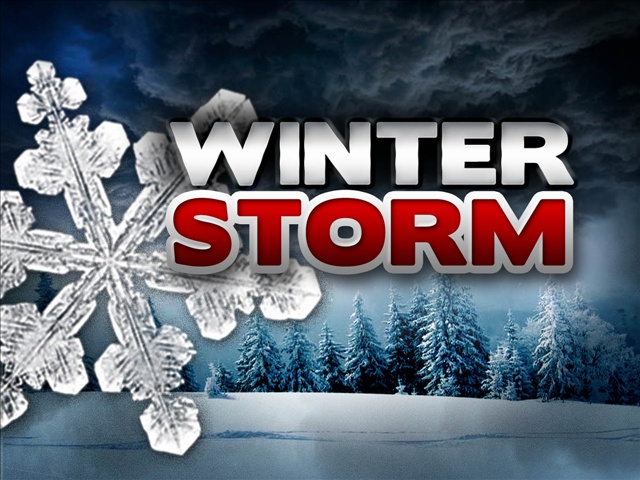
MINEOLA, NY (TIP): Nassau County Executive Edward P. Mangano announcedJanuary 20 that the Nassau County Department of Public Works (DPW) is prepared for the snowfall and flooding that is expected to hit the region on Friday, January 22nd. “Nassau County is monitoring the storm track and prepared to begin brining main County roadways, bridges and overpasses to prevent black ice from forming,” said County Executive Mangano. “DPW snowfighters are ready to keep our roadways clear and help ensuring residents have a safe commute.”
Nassau County DPW has 28,000 tons of road salt and 3,650 tons of road sand on hand. DPW’s snowfighting fleet includes 103 plow/salt trucks, 20 pick-ups with plows and sanders, 10 payloaders and 3 brine trucks. Over the past 5 years, the snowfighting fleet has gone from an average age of 21 years old to 8.
With the assistance of GPS, DPW supervisors monitor snowplows to determine when plows are down and where trucks are operating.
With a deep winter freeze expected on Friday, County Executive Mangano encourages residents to begin preparing for the cold, snow and ice. To help ensure a safe winter season, Nassau County offers the following checklist:
Property Owners:
- Do not plow snow across the road or shovel snow from your driveway onto shoulders or roadways. ● Do not pile snow high near intersections or driveways obstructing others’ vision; Park vehicles away from the road and follow local parking ordinances related to snow removal. ● Keep rocks, timbers, fences, basketball hoops, garbage bins, reflectors and other items away from the road. ● Keep areas around mailboxes clear in order to assist in safe mail delivery and to help prevent damage to mailboxes. ● Maintaining the end of your driveway could decrease chances of getting plowed in, or having your mailbox damaged. ● Keep sidewalks and pathways clear for pedestrians.
Children:
- Never build snow forts, make tunnels, or play in ditches or snow banks by the road. ● Stay away from the edge of the roadway as you wait for the school bus, get the mail, or watch the snow plow. ● Stay away from the end of a driveway when a snow plow is approaching. ● Keep sleds and toys away from the roadways at all times. ● Remember, the plow driver can’t always see you.
Drivers:
- Drivers should use extra precautions on the roads this winter season, especially when driving near trucks that are plowing and salting. ● Always wear your seatbelt and allow extra time to reach your destination. ● Do your best to minimize distractions so your focus can be on driving. ● Don’t attempt to pass a snow plow vehicle while they are plowing. ● NEVER attempt to pass a snow plow on the right. Many plows are equipped with wings that weigh as much as a small compact car. ● Plows can suddenly move sideways from hitting drifts or by cutting through packed snow. ● Plow drivers have limited visibility and they cannot see directly behind their trucks. ● Avoid sudden starts, stops and turns. Accelerate carefully so car wheels don’t spin. ● Improve visibility by clearing all snow and ice from the entire car – hood, roof, trunk, turn signals, tail lights, headlights, windows, mirrors and fender wells. ● Driving with headlights on low-beam provides better road illumination in snow and fog than using high-beams.
Family Disaster Plan:
Families should be prepared for all hazards that affect their area and themselves. Follow these basic steps to develop a family disaster plan:
Learn your community’s warning signals.
Meet with your family to create a plan. Pick two places to meet: a spot outside your home for an emergency such as fire, and a place away from your neighborhood in case you cannot return home (a real possibility during the day when adults are at work and children are at school). Choose an out-of-area friend as your family check-in contact for everyone to call if the family becomes separated.
Implement your plan. Post emergency telephone numbers by the phones. Install safety features in your house such as smoke detectors and fire extinguishers.
Inspect your home for potential hazards and correct them.
Have your family learn basic safety and first aid measures. Make sure everyone knows how and when to call 9-1-1 or your local emergency medical services phone number.
Have disaster supplies on hand.
Home Emergency Supplies:
Winter has arrived and you should stockpile the following supplies in the event a winter storm or power outage prevents you from leaving your home.
Flashlights and extra batteries.
- Battery-operated radio and extra batteries. ● Emergency non-perishable foods that do not require refrigeration. ● Non-electric can opener. ● Bottled water. ● One week supply of essential medicines. ● Extra blankets and sleeping bags. ● First aid kit and manual. ● Fire extinguisher. ● Emergency heating equipment, used properly. ● Winterize Your Home
Take the time now to get your home ready for the winter season by following these tips:
● Have your heating system checked by a professional annually. This will ensure that your system is working safely and efficiently which, in turn, will save you money. If you heat by wood, clean your fireplace or stove. Have your chimney flue checked for any buildup of creosote and then cleaned to lessen the risk of fire.
●Make sure your home is properly insulated. If necessary, insulate walls and attic. This will help you to conserve energy and reduce your homes power demands for heat.
●Caulk and weather-strip doors and windowsills to keep cold air out.
●Install storm windows or cover windows with plastic from the inside. This will provide an extra layer of insulation, keeping more cold air out.
●Inspect and flush your water heater.
●Clean gutters. Leaves and other debris will hamper drainage. Replace batteries of smoke, heat and carbon monoxide detectors. If you did not do it when you set the clocks back, do it now.
Clearing Your Roof:
As the snow and ice continues to build up, homeowners should think about safety before trying to clear the snow from their roof. Clearing roofs is a dangerous task. However, if you think safety, and work safely, you will get the job done. Here are some safety tips:
● When possible, use long-handled snow rakes or poles. ● If you must use a ladder, make certain that the base is securely anchored. Ask a friend, neighbor or adult family member to hold the ladder while you climb. ● Know where the snow is going to fall before clearing the area. ● Make certain not to contact electrical wires. ● If possible, do not attempt to clear the roof alone. ● If you are afraid of heights or think the job is too big for you, HIRE HELP.
Protecting Water Pipes:
To prevent the mess and aggravation of frozen water pipes, protect your home, apartment or business by following the simple steps below. ● To keep pipes from freezing: ● Wrap pipes in insulation or layers of old newspapers ● Cover the newspapers with plastic to keep out moisture ● Let faucets drip a little to avoid freezing ● Know how to shut off water valves
Before Cold Weather:
● Locate and insulate pipes most susceptible to freezing, typically those near outer walls, in crawl spaces or in the attic. ● Wrap pipes with heat tape (UL approved). ● Seal any leaks that allow cold air inside where pipes are located. ● Disconnect garden hoses and shut off and drain water from pipes leading to outside faucets. This reduces the chance of freezing in the short span of pipe just inside the house.
When It’s Cold:
● Let hot and cold water trickle at night from a faucet on an outside wall. ● Open cabinet doors to allow more heat to get to un-insulated pipes under a sink or appliance near an outer wall. ● Make sure heat is left on and set no lower than 55 degrees. ● If you plan to be away: (1) Have someone check your house daily to make sure the heat is still on to prevent freezing, or (2) drain and shut off the water system (except indoor sprinkler systems).
If Pipes Freeze:
● Make sure you and your family knows how to shut off the water, in case pipes burst. Stopping the water flow minimizes the damage to your home. Call a plumber and contact your insurance agent. ● Never try to thaw a pipe with an open flame or torch. ● Always be careful of the potential for electric shock in and around standing water.
Staying Warm Indoors:
If heat goes out during a winter storm, you can keep warm by closing off rooms you do not need. Losing your heat when winters winds are howling is not pleasant. However, by following these simple tips, you will weather the storm more comfortably.
Use only safe sources of alternative heat such as a fireplace, small well-vented wood or coal stove or portable space heaters. Always follow manufacturer’s instructions.
Dress in layers of lightweight clothing and wear a cap.
Eat well-balanced meals.
If The Lights Go Out:
If you lose electrical service during the winter, follow these tips:
Call your utility provider first to determine area repair schedules. Turn off or unplug lights and appliances to prevent a circuit overload when service is restored. Leave one light on to indicate power has been restored.
To help prevent freezing pipes, turn on faucets slightly. Running water will not freeze as quickly.
Protect yourself from carbon monoxide poisoning:
● DO NOT operate generators indoors; the motor emits deadly carbon monoxide gas. ● DO NOT use charcoal to cook indoors. It, too, can cause a buildup of carbon monoxide gas. ● DO NOT use your gas oven to heat your home — prolonged use of an open oven in a closed house can create carbon monoxide gas. ● Make sure fuel space heaters are used with proper ventilation. ● Keep refrigerator and freezer doors closed as much as possible to help reduce food spoilage.
Generator Safety:
Electric generators can provide you with piece of mind and convenience when you are faced with a temporary loss of electric service. Follow these safety guidelines when operating a generator:
● Before installing a generator, be sure to properly disconnect from your utility electrical service. If possible, have your generator installed by a qualified electrician. ● Run generators outside, downwind of structures. NEVER run a generator indoors. Deadly carbon monoxide gas from the generators exhaust can spread throughout enclosed spaces. Install a carbon monoxide detector. ● Fuel spilled on a hot generator can cause an explosion. If your generator has a detachable fuel tank remove it before refilling. If this is not possible, shut off the generator and let it cool before refilling. ● Do not exceed the rated capacity of your generator. Most of the small, home-use portable generators produce from 350 to 12,000 watts of power. Overloading your generator can damage it, the appliances connected to it, and may cause a fire. Follow the manufacturer’s instructions. ● Keep children away from generators at all times.
Fire Safety:
● Wood-burning stoves, fireplaces and heaters can add a cozy glow, but make sure you are using them safely. ● Always keep a screen around an open flame. ● Never use gasoline to start your fireplace. ● Never burn charcoal indoors. ● Do not close the damper when ashes are hot. ● When using alternative heat sources such as a fireplace, woodstove, etc. always make sure you have proper ventilation. Keep curtains, towels and potholders away from hot surfaces. ● Have your chimney checked before the season for creosote buildup — and then clean it. ● Have a fire extinguisher and smoke detectors and make sure they work!Establish a well-planned escape route with the entire family.
Fireplaces:
● Keep the area around the hearth clear of debris, decorations and flammable materials. ● Leave the glass fireplace doors open while you are burning a fire. Close the doors when the fire is out. ● Always use a mesh screen with fireplaces that do not have glass doors. ● Do not use excessive amounts of paper when lighting a fire. ● Avoid using liquid fire starter or other flammable liquids to start a fire.
Kerosene Heaters:
If you use kerosene heaters to supplement your regular heating fuel, or as an emergency source of heat, follow these safety tips:
Follow the manufacturer’s instructions.
Use only the correct fuel for your unit. ● Refuel outdoors ONLY and only when the unit is cool. ● Keep the heater at least three feet away from furniture and other flammable objects. ● When using the heater, use fire safeguards and ventilate properly.
Carbon Monoxide Poisoning:
Carbon monoxide poisoning is a silent, deadly killer claiming about 1,000 lives each year in the United States. Such common items as automotive exhaust, home heating systems and obstructed chimneys can produce the colorless, odorless gas. The gas can also be produced by poorly vented generators, kerosene heaters, gas grills and other items used for cooking and heating when used improperly during the winter months.
● NEVER run generators indoors. Open a window slightly when using a kerosene heater. ● NEVER use charcoal to cook indoors. ● NEVER use a gas oven to heat your home. ● Symptoms of carbon monoxide poisoning include sleepiness, headaches and dizziness. If you suspect carbon monoxide poisoning, ventilate the area and get to a hospital.





Be the first to comment